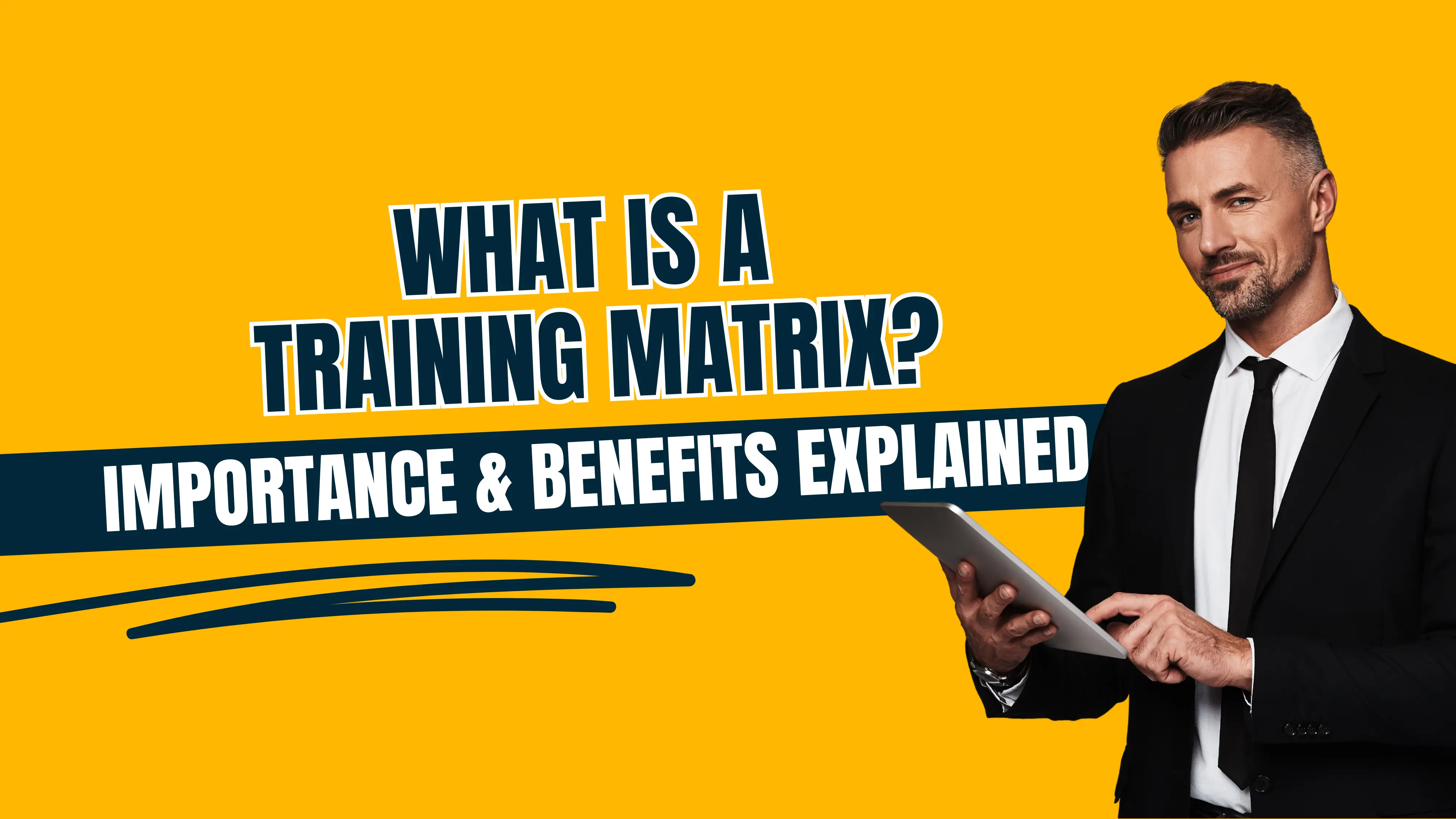Understanding and addressing the gap between current workforce skills and future requirements is crucial for any organization aiming to remain competitive. Hence, it becomes critically important for every company to identify skills gaps and fill them on a regular basis.
The skills gap is the difference between the current skills that the employees of an organisation have versus the skills that are required by the company right now or in the near future to keep up its graph of success.
These skills can be hard skills such as project management, analytics, digital communication, handling AI tools, etc., soft skills such as problem-solving, time management, leadership, change management, etc., and trade skills, depending on the different job roles in question.
What is a Skills Gap Analysis?
Skills gap analysis is a process conducted by the HR and L&D teams of an organization to identify the disparity between the skills that the current employees of the company have and those required by the employers to grow.
A skills gap analysis is performed to determine the skills that employees of the company need to carry out their jobs in effective ways to ensure organizational sustainability and success.
HR professionals, with the help of the team leaders and the management of the company, work together to point out the skills that will be needed by the employees for upcoming projects, strategic changes, and technological updates. Then, they determine which skills cannot be met by their current workforce, thereby concluding the analysis.
Importance of Conducting a Skills Gap Analysis
According to the Future of Jobs Report 2023, about 44% of companies expect that their workers’ skills will be disrupted in the next five years.
Therefore, conducting a skills gap analysis and closing the identified gaps regularly and as soon as possible is extremely essential for the continued growth of not only the organization as a whole but also the employees working in the organization.
Helps in Accerated Digital Transformation
Technology is revolutionizing every industry and every aspect of a company. All kinds of businesses need to adopt the latest digital tools and innovations to keep up with the growing technology. This change is called digital transformation.
Through a skills gap analysis, you can get to know about the lack of technical competency in the workforce as well as in the organization as a whole. When identified and filled by the continuous efforts of the employees, the management, and the HR team, it can lead to an accelerated digital transformation of the organization.
Provides Insights into the Workforce
With a skills gap analysis, you can get to know which employees have the required skills and knowledge and which ones have a significant skills gap.
Furthermore, this data can help you identify target employees to be trained on specific skills. Such targeted training and development is both effective and optimal and results in revenue growth as well as cost savings.

Helps in Workforce Planning and Management
For efficient workforce planning, it is essential that the company has the right people with the right kind of skills at the right positions. And, for that to happen, it is crucial that you are aware of your current status in terms of employees, their positions, and their core competencies.
A skills gap analysis helps you find out which positions lack the required skillsets, making it possible to set goals to fill these gaps.
It also helps in identifying if there are major voids in the company in terms of skills, where the hiring team might have to intervene and develop recruitment strategies for the future. So, skills gap analysis also helps in designing the recruitment strategy for the company.
Aids in Employees’ Learning and Development
Through skills gap analysis, you can understand how, when, and on which skills you need to train your target employees.
With a proper idea of what the future of the organization needs and what you currently have, you can easily plan to invest in the learning and development of your employees to upskill or reskill them.
Helps Stand Out as an Employer
Every employee wants to grow themselves - financially as well as in terms of skills and knowledge. And, when employees have trust in their employer that their skill growth is well taken care of, employer branding of the organization gets better.
This not only helps retain the talent but also attracts the best talent from around the market, whenever the company has a vacancy.
How to Conduct a Skills Gap Analysis?
Here are a few steps that will help you not only in conducting a skills gap analysis in your company but also in filling these gaps and monitoring them closely henceforth.
Step 1 - Identify and Measure Current Skills
When you see that the teams in the company aren’t getting better, their efficiency and productivity have reached saturation or are declining, or if the introduction of new methods and technology isn’t being accepted well, you should know that it’s time to conduct a skills gap analysis.
The first step in conducting a skills gap analysis is to identify the current skills that your employees’ jobs require. To understand this better, you can seek information from several sources, such as -
- KPIs and KPAs
- Performance reviews and the figures associated
- Attrition rate
- Team assessments
- Regularly conducted tests
- Conversations with managers and senior managers
Once you have identified the skills, you can conduct a skill assessment test for each employee to measure their skills in different aspects - technical, hard, soft, behavioral, leadership, etc. depending on their job profiles.
There are tools in the market that can help you with conducting a skills gap analysis. These tools generate questionnaires on the required topics, evaluate the employees' responses, and create a report, making it almost effortless to identify and measure the current skills of your employees.

Step 2 - Determine Required and Critical Skills
To determine the required skills that the organization would need to thrive in the next few years, identify organizational goals and the expected future projects of the company. Then, with the help of senior managers of different teams of the company, jot down a list of skills that the employees would need to attain those organizational goals.
You might also want to identify the critical skills needed for the company to meet its objectives. Figuring out the answer to the following questions will help you determine these skills.
- What critical skills are currently needed by every business in the industry?
- Which positions in your company can be automated or made more productive by using technology?
- What are the new technologies that the employees need to be skilled in?
- What are those skills that are valued by the organization the most?
Step 3 - Identify and Fill in the Gaps
When you have both - the current skills and the required skills, it becomes easy to find out the gaps. Next, it’s time to fill in these gaps. There are two ways to fill in the skills gaps identified - training the current workforce or hiring a new workforce. You can also choose to go for a combination of both.
Though training your employees is a lot more convenient and inexpensive, sometimes the only option is to hire a new employee. This decision can be made in conjunction with all the recruiters and the managerial level staff of the company.
Once decided, you can choose to train your employees through offline or online modes. Some offerings that the company can give to its employees for a better training experience include -
- Opportunities to attain certifications
- Employee mentorship programs
- Subscriptions to online courses and other educational material
- Exposure to real-life training possibilities through events and conferences
Step 4 - Observe Training Efficiency
In order to evaluate the efficiency of your training programs, you must conduct tests on skills that your employees have recently learned. The skill assessment test tools can again come in handy at this step to create questionnaires, evaluate employees, and also rank them based on their performances.
Step 5 - Make it a Regular Job
According to a study conducted by Forbes, nearly half of the executives believe that the skills that their employees have today will be deprecated within the next two years. Therefore, it becomes utterly important to conduct such skills gap analyses regularly within the cycle of at least 2-3 years. This will make sure your workforce is future-ready with skills that future projects might need.
Conclusion
Skill assessment tools are a major saviour when you decide to conduct a skills gap analysis in your organization. These tools are designed to conduct skill tests of your employees, evaluate their responses, and generate their results and a generalized report on how your employees are performing overall and who is better than others.
WeCP helps recruiters, hiring managers streamline the identification of technical and soft skills, such as communication, problem-solving, and decision-making. It simplifies the skills gap analysis process, making it seamless and convenient for organizations.
This approach ensures that teams are equipped with the necessary capabilities to navigate the complexities of the modern workplace, enhancing overall productivity and competitiveness.
Want to know more on how WeCP can help you out? Try WeCP for free or Schedule a Call with us.



.png)








.svg)